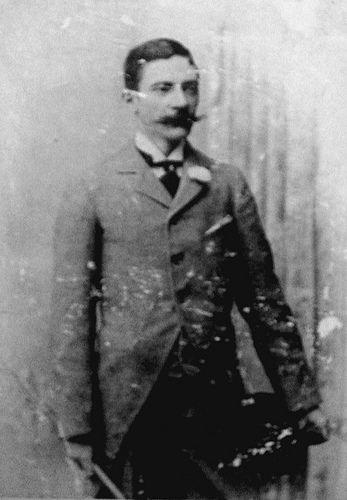3.2.6 The prose work of Enrique Hernández Miyares (1859 – 1914)

Enrique Hernández Miyares left behind a prose oeuvre that is important to the Cuban literary tradition, especially in the narrative and journalistic fields, although his sustained foray into the latter is better known. The modernist affiliation commonly attributed to him is more evident in this sphere of his intellectual creation than in his poetry; although classical motifs and romantic overtones are also present, which makes his work more complex in terms of aesthetic qualifications.
His best-known narrative pieces are identified by the following titles: “The Countess of Jibacoa and Luis Felipe de Orleans”, “The Inkwell and the Ink” and “The Heirs”, which are examples of short stories, in which the colophon is almost always given by a moral lesson.
“The Countess of Jibacoa and Louis Philippe of Orleans” is a historical tale that praises generosity while also offering a veiled critique of lineage and wealth as paradigms for the social valuation of individuals. The text, like the others cited, is written in a simple yet carefully chiseled aesthetic style that makes for an enjoyable read.
“The Inkwell and the Ink” has a symbolic content that predates more contemporary readings; it alludes to the use made of writing—through these representative objects—in human relationships, especially in a negative sense, illustrated by the final example of a son who justifies himself for not writing to his mother at any longer lengths, falsely claiming that he had run out of ink.
For its part, “The Heirs” epitomizes the double standards prevailing in society and how the concept of kindness was viewed superficially, due to the separation between public and private behavior. The protagonist—named “Homobono” with clear satirical intent—faced with impending death, offers the following advice to his loved ones:
“My children, never meddle in politics or religion. This has served me very well in life. One should always side with the one in charge, and if there is competition between two rulers, it is also advisable to side with the one who wins. Never enter into arguments of any kind with anyone, and when someone asks you who you think or what you think about some issue, play dumb, as I have always done, and with a laugh of both sexes, I mean, ambiguous, disappear from the scene. When you speak in front of people, speak well of everyone, for one should not speak ill of anyone, but only behind their backs… This has also served me very well in my pilgrimage through this valley of tears.”
As for journalism, he was one of the most prominent cultivators of this genre in the late 19th and early 20th centuries, initiated by Diego Vicente Tejera. His articles generally dealt with literary subjects, also including the occasional political allusion of a separatist nature.
Regarding literary subjects, he wrote articles dedicated to Julián del Casal, of whom he was a close friend and admirer; after his death, he chaired the committee charged with erecting a mausoleum for him and instituted “Casal Day,” to be celebrated on October 21.
Her narrative texts were published posthumously in 1916, and her press work appeared in various publications, including: Diario de Señoras, El Almendares, El País, La Habana Elegante, La Habana Literaria, the weekly Cacarajícara, La Victoria, El Triunfo, La Discusión, and El Fígaro. Her work in Cuban culture also includes her status as a founding member of the National Academy of Arts and Letters.








